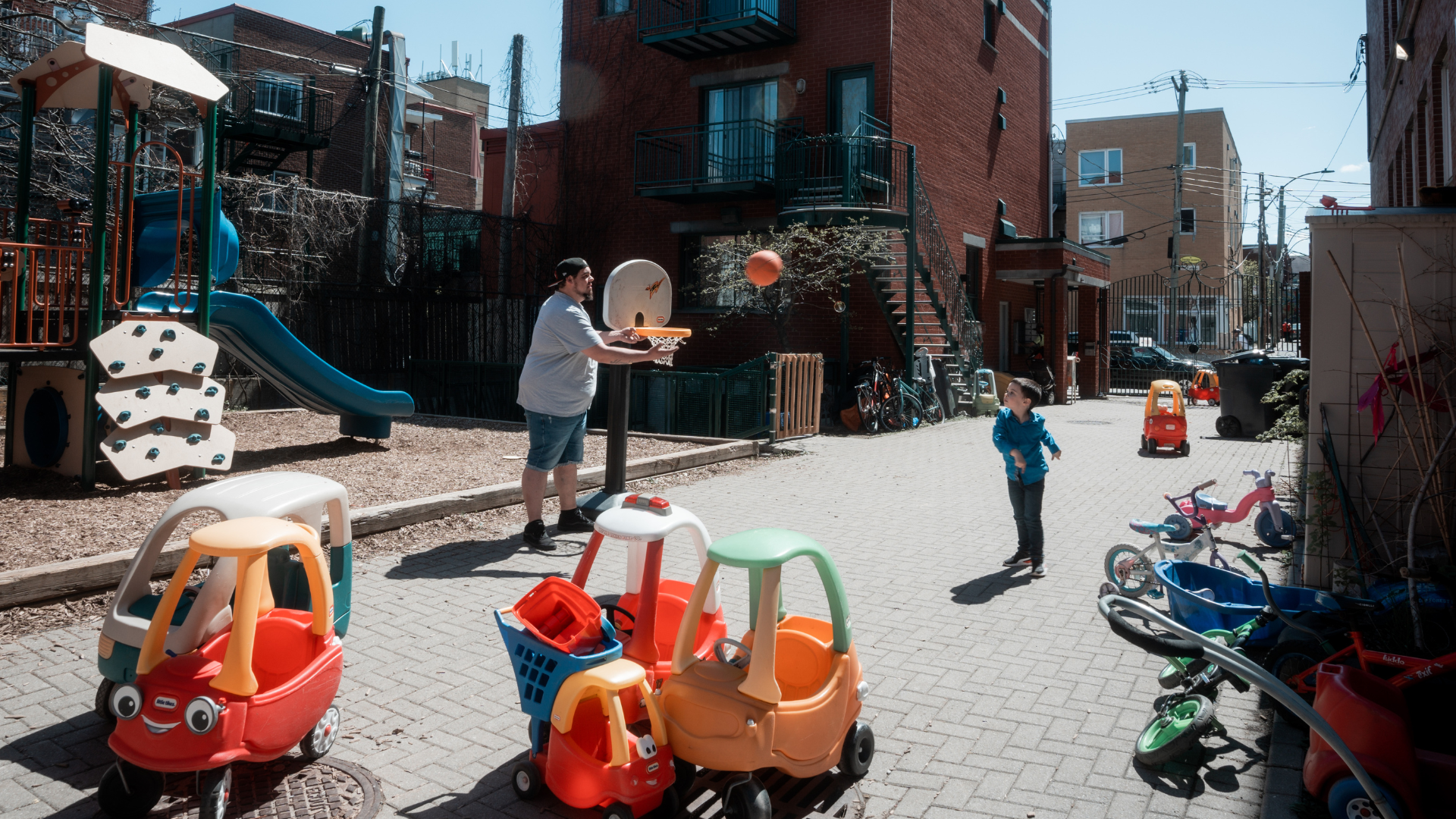
Parc-Extension
Snapshot of
Parc-Extension

Discover key facts
📍 Poverty – very high
The neighbourhood’s low-income rate reaches 21%, the second highest in Montreal after Peter-McGill, and twice the Montreal average (11%). This situation affects all age groups (0–17, 18–64, and 65 and over). Families, whether single- or two-parent, are particularly affected, and the median household income, at $44,800, ranks as the second lowest on the island, well below the Montreal average ($58,000).
🌎 Immigrant population and asylum seekers – strong presence
Nearly one in two residents in the neighbourhood is an immigrant (45%, or 12,840 people), compared to one-third in Montreal (33%). The neighbourhood also hosts the second largest population of asylum seekers on the island after Montréal-Nord, with 3,940 people.
✏️ French proficiency and low educational attainment (without a high school diploma) – limited and high
53% of neighbourhood residents speak French, one of the lowest rates on the island. In addition, 11% speak neither French nor English, well above the Montreal average (2%). Among adults aged 25 to 64, 25% are undereducated, meaning they do not have a high school diploma, more than double the Montreal average (9%).
👨🏾🤝👨🏼 Diversity – the most diverse neighbourhood in Montreal
68% of residents, nearly 20,000 people, belong to visible minority groups. This rate, the highest on the island, far exceeds the Montreal average of 38%.
🏢 Housing – inadequate, unaffordable, or too small
A significant proportion of households in the neighbourhood face housing issues. The core housing needs rate reaches 17%, the highest of all Montreal neighbourhoods. Affected households live in housing that is inadequate, unaffordable, or too small for the number of occupants.

Dashboard
Consult this dashboard to access a wide range of demographic, socio-cultural/economic, and living-condition data.



